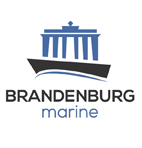Loss Prevention Advice
- Details
- News /
With reference to the circular received from the Commander of the Libyan Armed Forces and the directives of the Chief of Staff of the Navy and pursuant to the assignment of the Directorate of the Coast Guards and Ports Security to carry out inspections of vessels’ hulls below the waterline at a designated area on the marine chart within 12 nautical miles upon entering the territorial waters and to submit the final report to the competent authorities with all expenses related to the underwater inspection to be borne by the vessel’s owner or the supplier.
- Details
- News /
This is an update relating to a recent increasing trend in our area where vessels anchoring at the border/ outside the designated anchorage zones encounter delays and/or claims due to a potential entanglement with subsea infrastructure such as underwater pipelines or communication cables.
On May 7th 2025, a letter on the matter was issued by Directorate General of Maritime Affairs and sent to various maritime organizations in Turkey.
The letter instructs the agents to inform Masters prior to anchoring operations at the Istanbul Southern Entrance Anchorage Areas and the anchorage zones under the authority of the Ambarli Regional Port Authority that anchoring operations should be conducted inside the designated anchorage zones, otherwise, measures such as assignment of an escort tug or underwater inspections at the expense of vessel interests may be undertaken; in addition, administrative sanctions may be imposed in cases where a vessel anchors outside of the designated zones.
On the basis of the above, and to avoid any delays to vessel’s schedule, Shipowners should be notified to conduct anchoring operations inside the designated anchorage zones.
- Details
- News /
Extended deployments at sea are a reality for many seafarers, often lasting beyond scheduled durations due to global disruptions, port congestion and unforeseen operational demands. Whether weeks or months at sea, life aboard a vessel can take a toll on mental, physical and emotional wellbeing. Below are some practical tips for maintaining wellbeing during these long stretches at sea.
Routine
A structured daily routine is essential to maintaining both mental and physical wellbeing while at sea. With tight schedules and long shifts, a routine brings a sense of normality and control to your day. Incorporating time for work, physical activity, rest and leisure helps prevent burnout. Personal activities like reading, listening to music, or engaging in hobbies help to relax. A well-planned routine also supports a healthy sleep cycle, crucial for staying alert and avoiding fatigue.
- Details
- News /
High number of stowaway cases. Each successful boarding of a stowaway represents a failure in ships security; it can bring danger to the ship’s crew and can result in the death or injury of the stowaway(s) if they enter a dangerous location on the ship.
As well as the safety aspect, stowaway incidents are expensive and often slow to resolve, resulting in substantial costs and disruption for the Shipowners affected. Evidence suggests that the cost of resolving each stowaway claim is also increasing, with the cost to the Club in the first quarter, approaching the same as last year’s total. Also, the stowaways are often coming in larger groups, increasing the complexity of confining them if found and adding to the cost of repatriation
These incidents can often result in substantial disruption to ships operations and may even result in punishment for the ship affected.
Full advisory at the following link.
https://britanniapandi.com/wp-content/uploads/2025/05/Stowaways.pdf



